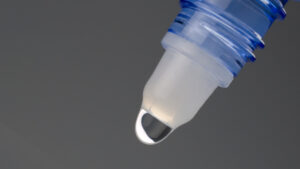
Lisa from Petaluma asks, “I see so many young people vaping today. Is vaping safe? Why do e-cigarettes explode? If someone is burned, what are their legal rights?”
Lisa, the use of e-cigarettes, e-pens, e-pipes, e-hookah, and e-cigars is seen by many as a “safer” way to ingest nicotine than smoking. Sales of these devices are skyrocketing and expected to exceed $10 billion by 2018. While users do not inhale cigarette smoke, which is a witches’ brew of toxin and carcinogens, nicotine itself is not safe. Moreover, multiple studies have shown the vapor from e-cigarettes contains harmful chemicals.
What is most alarming to me is that so many American teens and young adults – many of whom may never have taken up smoking regular cigarettes – are vaping today and at risk of becoming life-long nicotine addicts. The FDA reports “e-cigarette use among high school students has skyrocketed from 1.5 percent in 2011 to 16 percent in 2015 (an over 900 percent increase) and hookah use has risen significantly.” Last year, an estimated 3 million U.S. middle and high school students used e-cigarettes.
This poses a serious health risk to our youth. As summarized by the American Lung Association, “nicotine use during adolescence and young adulthood has been associated with lasting cognitive and behavioral impairments, including effects on working memory and attention.”
Turning to your second question Lisa, I too have read news stories, and have been contacted by users, burned and injured when their e-cigarette caught on fire or exploded.
The main parts of an e-cigarette are the mouthpiece, a refillable cartridge containing liquid, a heating element, a microprocessor, and a rechargeable lithium battery. The liquid in the cartridges consists of nicotine extracted from tobacco and mixed with a base (usually propylene glycol). When the user inhales on the device, he or she draws vapor from the heated liquid through the mouthpiece. The device must reach high temperatures in order to mimic a traditional cigarette.
No regulation, code or law applies to the safety of the electronics or batteries in e-cigarettes. Furthermore, the vast majority of e-cigarettes and vaping devices are manufactured overseas in countries with little or no consumer safety protections.
For some, the lithium battery in the e-cigarette overheats or the liquid leaks into the battery chamber. Both of these instances can result in the combustion of the e-cigarette and cause serious injuries.
To answer your final question Lisa, our civil justice system contains checks and balances promoting safe products. Specifically, under the legal doctrine of “strict products liability,” the consumer is relieved of the burden of demonstrating a specific act of negligence by the defendant caused his or her injury.
A manufacturer is strictly liable when an article he/she places on the market, knowing that it is to be used without inspection for defects, proves to have a defect that causes injury. Recognized first in the case of unwholesome food products, such liability has now been extended to a variety of other products that create as great or greater hazards if defective. A product may be defective because of a manufacturing defect, design defect or a lack of adequate warning of known safety hazards.
The purpose of strict liability is to insure that the costs of injuries resulting from defective products are borne by the manufacturers and sellers rather than by the consumer.
Strict liability permits the imposition of tort liability against all in the marketing chain — the manufacturer, importer, distributor, and retailer. The liability among the defendants is joint and several. That means any defendant in the stream of commerce (and causally connected to the product defect) is responsible for all of a plaintiff’s damages attributable to the defective product.
This is a critical point as many e-cigarettes are manufactured in China by companies with no operations in the U.S. As a result, it can be highly challenging and expensive to serve the complaint on manufacturer and impossible to collect damages should the suit be successful. However, U.S. importers, wholesalers, and retailers that sold the faulty vaping device may each be subject to suit. If one or more of these companies is found liable and pays damages, it is their responsibility to seek indemnity from the manufacturer.









